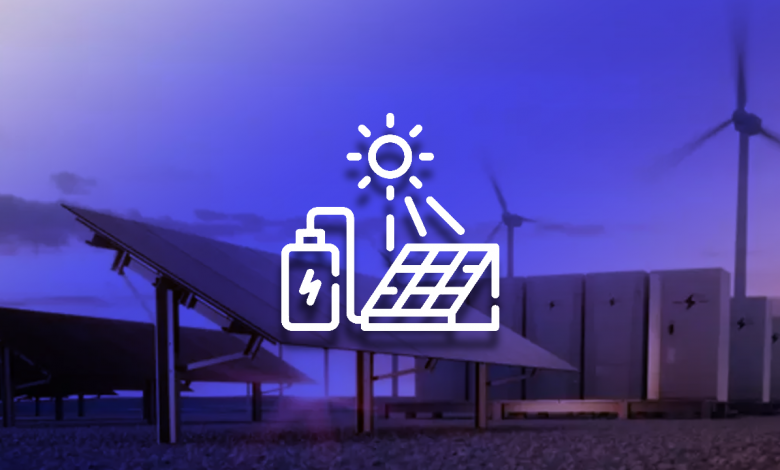Daily Current Affairs for UPSC
Storage Options for Renewable Energy
Topic- Science and Technology [GS Paper-3]

Context- Recently, the Government of India has started exploring storage options as the share of renewables increases in the grid.
Key Highlights
Current Scenario
- In order to operationally sustain a huge monthly addition of an average 1,000 megawatt from non-fossil fuels or renewables to the electricity grid, India needs to urgently work on developing viable energy storage options.
- The amount is around five times the amount of power a 250 MWe nuclear plant produces.
Producer
- India is the third largest producer of renewable energy in the world.
- About 40 percent of installed electricity capacity comes from non-fossil fuel sources.
- This green push has resulted in a sharp 24 percent reduction in emission intensity of GDP between 2005 and 2016, but it has also thrown up challenges of a grid being increasingly powered by renewables.
Alternative to Lithium Ion Batteries:
- Even as the Lithium-ion storage battery option for grid application is now being ruled out as unviable, at least for the current scenario, an emerging policy resolution is that solar and wind-based generation cannot continue to be pushed down to struggling electricity distribution companies or discoms.
Solar Energy
- Solar energy is any such type of energy generated by the sun.
- Solar energy is created by nuclear fusion which takes place in the sun.
- Fusion mainly occurs when protons of hydrogen atoms violently collide in the sun’s core and fuse to create a helium atom.
- India had committed for installing 175,000 MW of renewable energy by the year 2022 of which 100,000 MW was to be solar power.
- As of October 2022, 61,000 MW of solar power had been installed till now.
Major Programmes in Renewable Energy Sector
National Solar Mission (NSM)
- The mission was launched with the objective of establishing India as a global leader in solar energy, by creating the policy conditions for solar technology diffusion across the country.
- The initial goal of NSM was to install 20 GW solar power by 2022.
- It was later upscaled to 100 GW in early 2015.
Pradhan Mantri Kisan Urja Suraksha evam Utthaan Mahabhiyan (PM-KUSUM)
- PM-KUSUM was launched in 2019 and it aims to help farmers access reliable day-time solar power for irrigation, reduce power subsidies, and decarbonise agriculture.
- It provides farmers with incentives to install solar power pumps and plants in their fields.
Atal Jyoti Yojana (AJAY) Phase-II
- It is a scheme for the installation of solar street lights with a 25% fund contribution from MPLAD Funds.
Solar Parks Scheme
- Solar parks provide solar power developers with a plug and play model, by facilitating the required infrastructure like land, power evacuation facilities, road connectivity, water facility etc. along with all statutory clearances.
Challenges
- Non-availability of natural gas to run gas turbines:
-
-
- It complements the increasing RE capacity in the generation mix.
- India’s huge fleet of coal-based power plants of 200 MW series are more than 25 years old, run on old technology and do not promise robust reliability.
-
- India’s heavy load:
-
-
- The heavy load demand is far from saturated.
- There is also the need to replace obsolete coal-based plants with supercritical highly-efficient coal-based plants as an intermediate goal for total transition.
- However, it may not be acceptable to the international community in view of the impending climate crisis.
- Coal based usage reduction:
- There is an immediate need to reduce the percentage of coal-based capacity by closing the inefficient fleet
- Simultaneously it needs to add new flexible capacity to meet load requirements.
- Newer technologies or avenues are required which can convert coal-based capacity to a fuel mix of gas and hydrogen.
-
- Storage capacity & flexibility of thermal power plants:
-
-
- Thermal power plants should be made flexible up to 55 percent and in coming phases, after three years, go down to 40 percent.
- Battery storage is very expensive at Rs 10 per kilowatt per hour. There is a fresh impetus required to pursue pumped hydro projects so as to reduce costs.
-
- Reduced scope to go renew:
-
- The renewables challenge is compounded by the fact that SECI (Solar Energy Corporation of India Ltd) has locked a number of contracts which involve green developers in rigid PPAs (power purchase agreements) with no scope for innovation.
Way Ahead
- Hydrogen and hybrid generation models blended with off-stream pumped storage:
-
-
- Stepping up green hydrogen production and tapping into its potential as a fuel must be expedited.
- All pumped hydro sites and hydro PSUs have been given a goal of taking up pumped hydro schemes.
- There must be opencast mines as potential sites for pumped hydro in the future.
-
- Energy storage:
-
-
- It is also needed alongside green energy sources to primarily balance out the variability in renewable generation – electricity is generated only when the sun shines or when the wind blows.
- However this is not always in sync with the demand cycle.
- Storage can also help tide over the shortcoming associated with renewables.
-
- Renewables bundled with a viable storage option:
-
- For procurers like state-owned discoms, renewables are not always a viable option precisely due to these vagaries in the generation trends, which means that they still have to depend on thermal or nuclear generation for meeting base load demand.
- The option will help overcome this problem.





.png)



